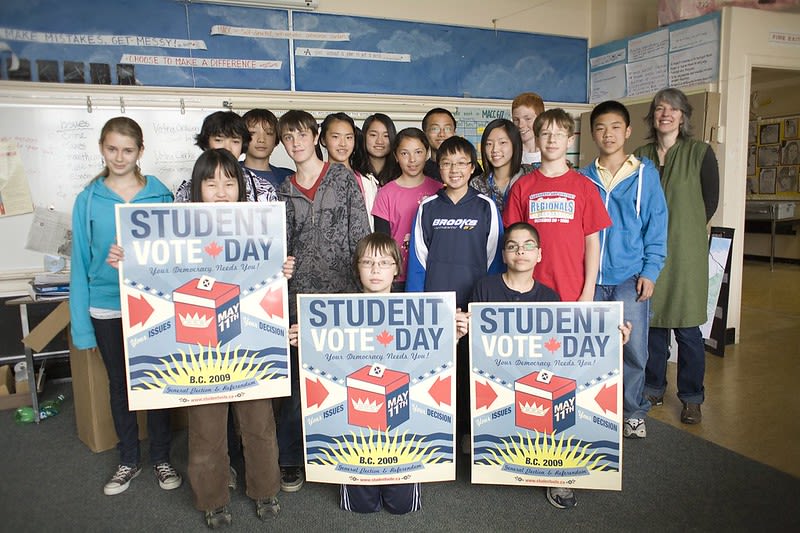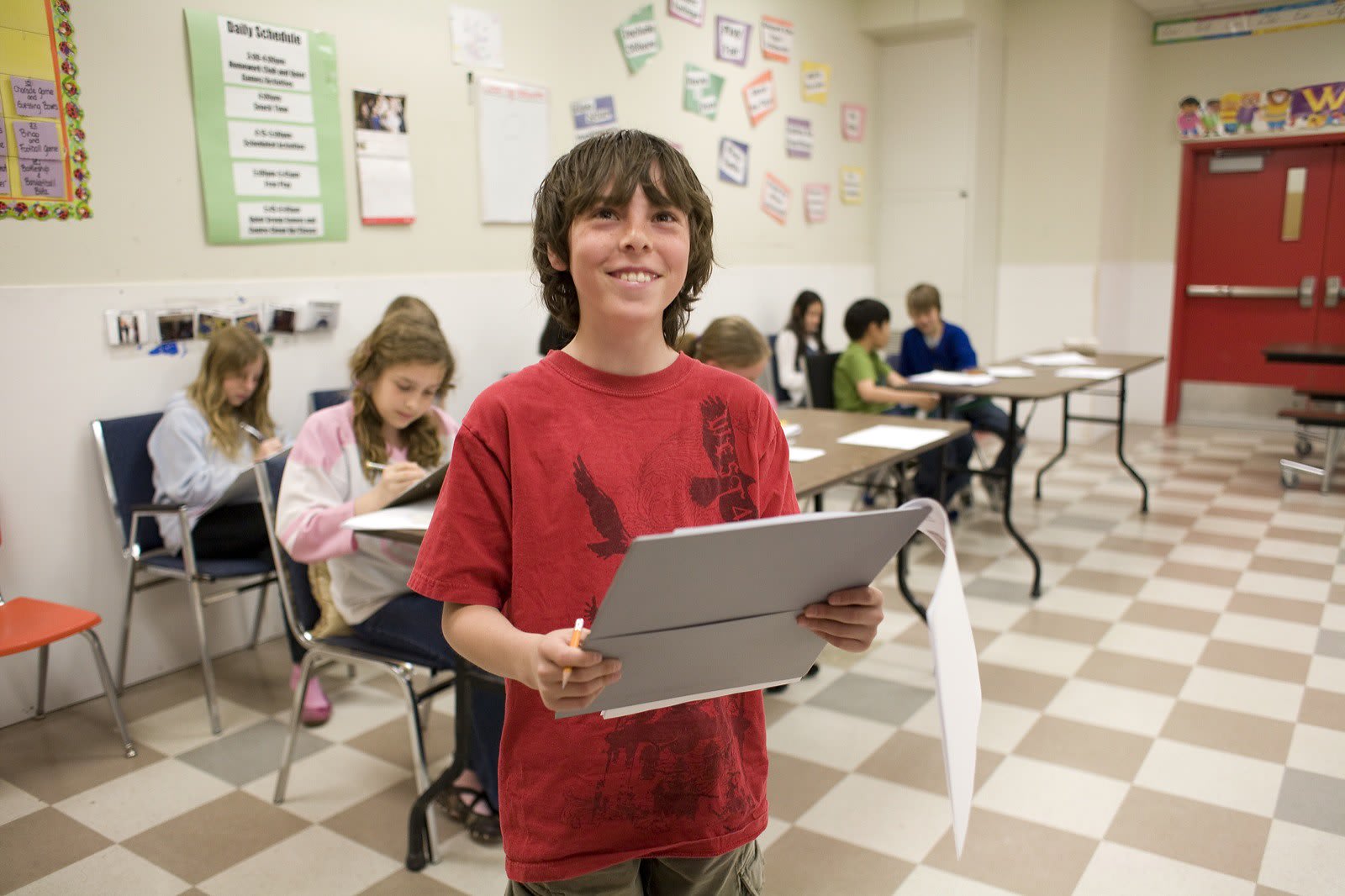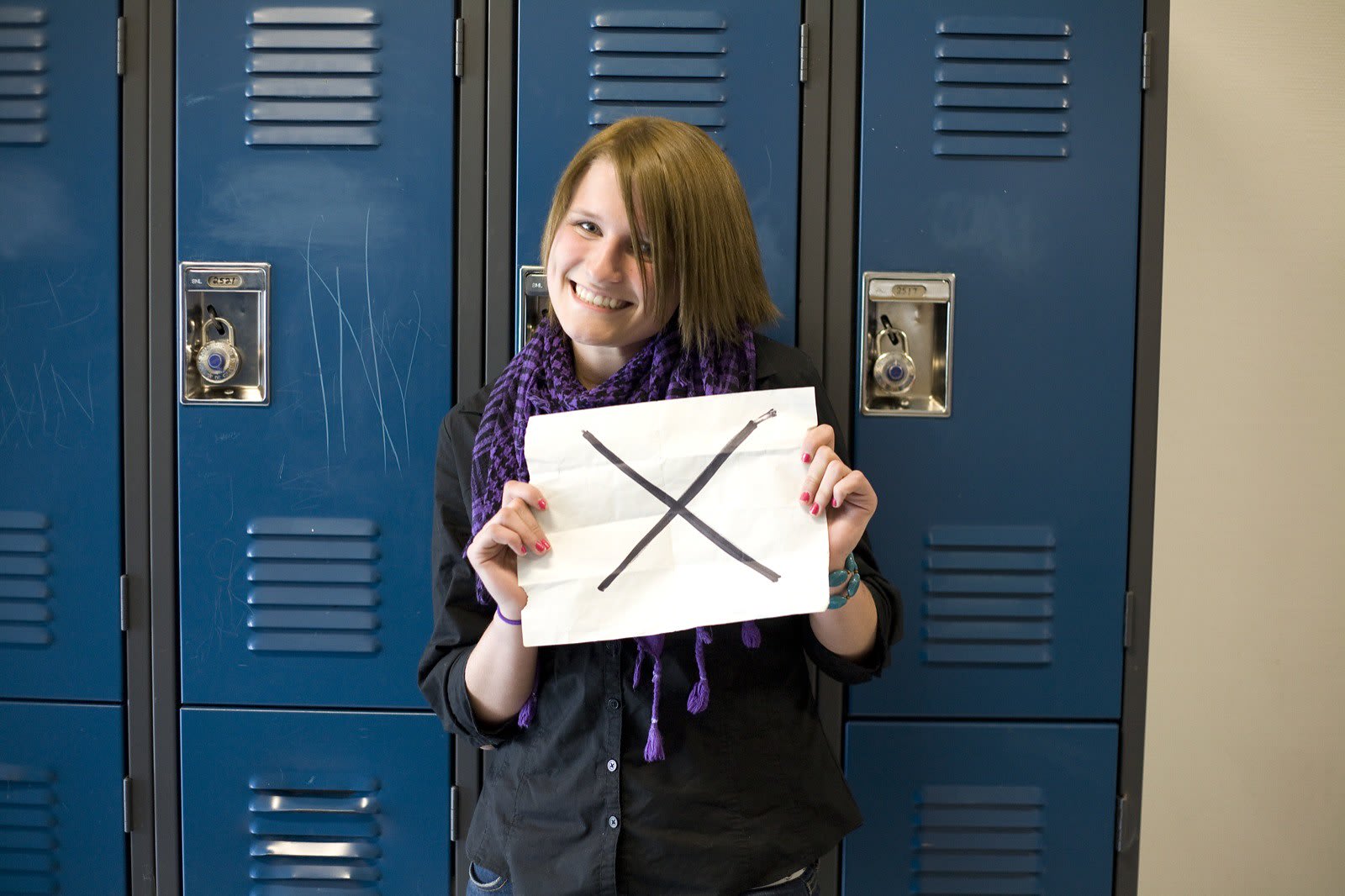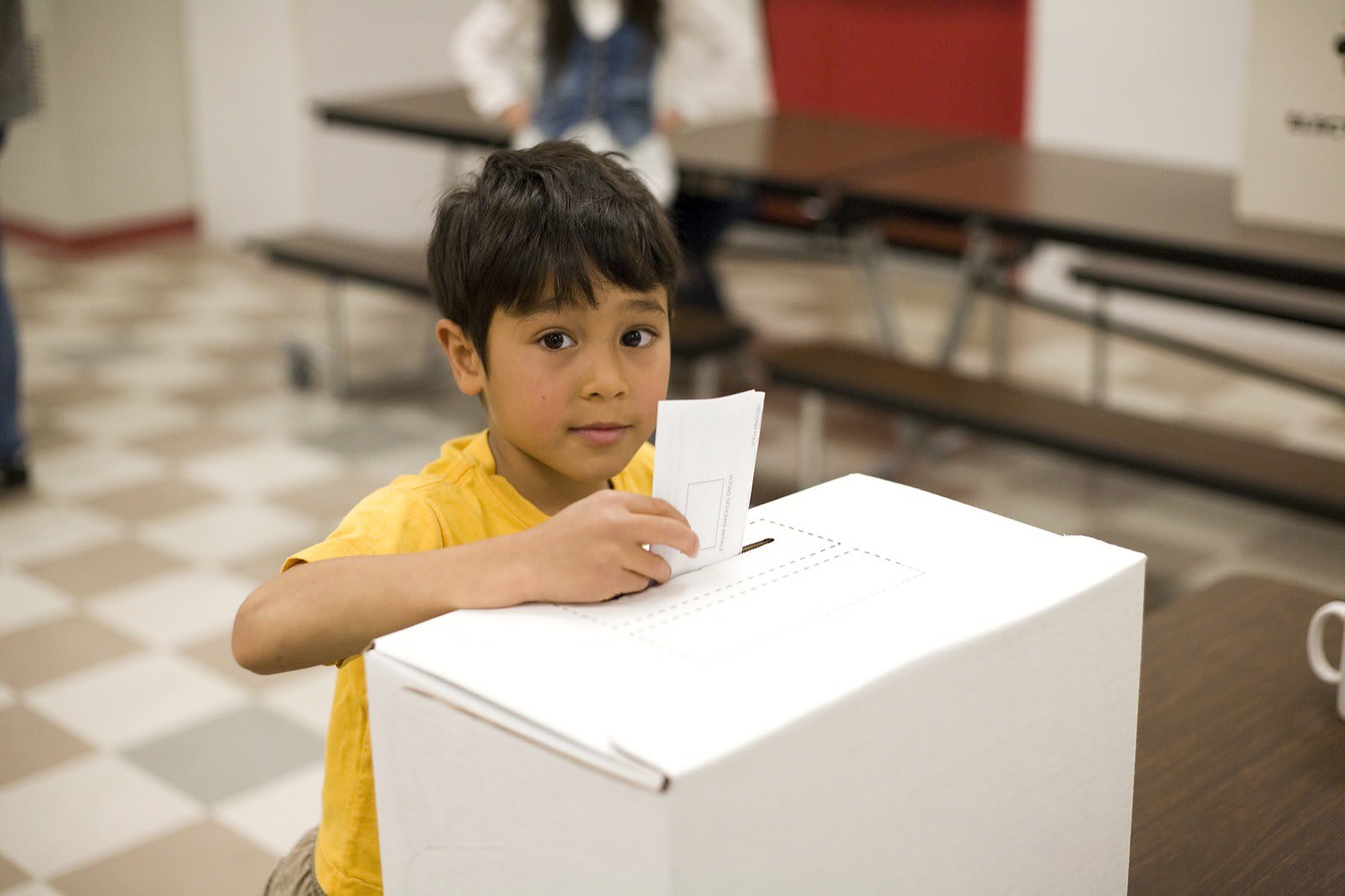
Civics education is more than just learning about the branches of government in Grade 10 — it’s about empowering the next generation to become informed, active participants in the democratic process. The CIVIX Student Vote program, a signature initiative by CIVIX—a non-partisan, registered Canadian charity—provides a dynamic, hands-on opportunity for students across the country to engage in a way that fosters critical thinking, dialogue, and active citizenship. In this blog, we’ll dive into the details of the CIVIX Student Vote program, hear insights from Dan Allan, the Chief Program Officer at CIVIX, and explore how this initiative is shaping the future of civic engagement in Canada.
With the upcoming 2025 Canadian federal election on April 28, Student Vote is once again offering schools an opportunity to engage students in a parallel election where they cast ballots for official candidates, just like voters across Canada. From Vancouver to Charlottetown, North Bay to Windsor, over 6,000 schools across Canada are registered to participate. This initiative is completely free for all schools, making it accessible for students of all backgrounds. It’s a chance for students to understand the issues that matter to them, learn about candidates and parties, and feel confident in their future role as voters. With both provincial and federal mock elections, students have more opportunities than ever. In Feb 2025, a recent mock Ontario provincial election in Barrie, Ontario brought democracy to life in classrooms with the help of non-partisan educational resources for different ages and stages.

How CIVIX Student Vote and Supportive Resources Foster Civic Engagement
The CIVIX Student Vote program offers valuable opportunities for parents, teachers, and students alike. For educators, it provides comprehensive teaching materials that complement the Civics curriculum in Canadian high schools, making it easier to bring real-world electoral processes into the classroom. The Teacher on Call in-person and online tutoring team encourages students and families to learn more about civics, both inside and outside of the classroom. For parents, it’s a chance to engage in meaningful conversations at home, helping to instill a sense of responsibility and informed citizenship. And for students, it’s an empowering experience that not only teaches them about how the government works but also gives them the confidence to understand and use their voices in shaping the future.
A Conversation with Dan Allan: How CIVIX is Shaping the Future of Youth Civic Engagement
CIVIX is a registered charitable organization dedicated to strengthening democracy through civic education. Can you tell us about the origin story behind CIVIX?
With a very limited amount of resources, a small but committed team built an engagement model for schools that would secure the participation of more than 300,000 students in the first ever province-wide parallel election program in Canada during the 2003 Ontario provincial election. Rather than student voting taking place at official polling stations coordinated by adults, the voting took place in schools, coordinated by students themselves — offering a more empowering experience.
Encouraged by the results, they began to expand their network across the country, offering the parallel election program in other jurisdictions. During the 2004 federal election, schools participated in every province and territory in the country. Student Vote soon became a meaningful tool for Canadian teachers as they delivered curriculum on government and democracy, and ultimately became cemented as part of the electoral process in Canada.
CIVIX has been collaborating with Elections Canada to provide the Student Vote program for federal elections since 2004.
CIVIX’s signature program, Student Vote Canada, has become a leading initiative for engaging students in the democratic process. How does it work, and how can schools participate?
Student Vote is a dynamic experiential learning program designed to cultivate the habits of active and informed citizenship among students. It empowers students to engage in the democratic process by casting ballots for official candidates in a parallel election.
Student Vote helps to demystify the voting process and give young people the confidence to participate in the future.
But it's also more than just casting a ballot; it’s an opportunity to learn about issues, consider different perspectives, and make informed choices.
The program operates in four key phases:
Register Your School: The program is open to all schools and there is no cost to participate. Schools can offer Student Vote to a single class, multiple grades or engage the entire school in the program.
Receive Materials: Registered schools receive various learning materials, including lesson plans, slide decks, online interactives and videos, as well as election supplies.
Engage with the Campaign: The activities are designed to inform students about government and the electoral process, facilitate research into the parties, candidates and issues, and foster discussion between students and their families.
Organize the Vote: Students take on the roles of election workers and organize the voting process. After the ballots are cast, schools tally the votes and submit them to CIVIX for public release after the general election.


Are there differences between the Student Vote programs offered to elementary and secondary students? How is the content and approach tailored for different age groups, especially in the lead-up to the 2025 federal election?
The main difference comes through the lesson plans offered to teachers to engage their students. There are two streams: elementary and intermediate/secondary. The activities, handouts, slide decks and videos are tailored to best suit each grade level.
For the current Student Vote program, is there a deadline for schools to register?
Are there specific materials or resources they receive once signed up?
The deadline to register is Friday, April 11, 2025 – if teachers wish to receive a package of physical materials. Educators can participate with just digital materials if they register at any time up to election day.
What happens with the Student Vote results once the program concludes?
Once schools hold their Student Vote, they tally their votes and submit them to CIVIX.
CIVIX then organizes the videos by electoral district, by province and throughout the country to share how students would have voted had they been the electorate.
The results are shared on the Student Vote Canada project website, through social media and with media.
In addition to Student Vote Canada, what are some of the other key programs offered by CIVIX, and who are they designed for?
CIVIX has several programs that touch a variety of subject areas:
Student Budget Consultation – Student Budget Consultation is a unique program that combines civic education and financial literacy. Students learn about the process of budgeting, examine the government’s revenues and expenditures, and explore current issues facing the country and different political perspectives. In the culminating activity, youth offer their own opinions on the priorities of the upcoming federal budget. The results are shared with the Department of Finance and all federal political parties.
Rep Day – Rep Day connects students with their elected representatives for a virtual or in-person meeting. Rep Day aims to break down negative stereotypes that young people have of politicians and the political process, and help them develop a better understanding of and sense of trust in the people and institutions within our democracy. Students are invited to share their concerns and engage in discussion about current issues.
CTRL-F – CTRL-F is a digital media literacy program developed to help students identify false and misleading information online, and locate credible sources. Named for the keyboard shortcut for ‘find,’ CTRL-F teaches quick, evidence-based strategies for evaluating the reliability of sources and claims.
PoliTalks – CIVIX’s newest program, PoliTalks, aims to cultivate the knowledge, attitudes, and skills to participate constructively in political discussions. The activities help students practice active listening, perspective-taking, and respectful self-expression skills, and build relevant contextual awareness.
For families and parents who want to get involved at home, what are some ways they can support their child’s civic learning outside of the classroom?
Always be open to constructive political conversations at the dinner table, and take your kids with you when you go to vote!
CIVIX is known for its non-partisan approach to youth civic engagement. How do you maintain neutrality while encouraging critical thinking and active participation?
CIVIX takes great pride in its non-partisanship. We ask our team to remain completely non-partisan, and we assure that our resources, tools and any materials we share or promote have no bias.
What gives you the most hope about the next generation of young Canadians when it comes to civic engagement and participation in democracy?
It is always amazing to hear stories of youth who enter the program apathetically, and then come away after an election both knowledgeable about how government impacts their lives, and passionate about making their voice heard on issues that matter to them.

~
The CIVIX Student Vote program plays a vital role in enriching civics education by giving students the tools and experiences they need to understand how democracy works. By providing hands-on opportunities to learn about the electoral process, this program helps students build critical thinking skills, engage in meaningful discussions, and become more informed citizens. With the support of educators and families, students are empowered to explore the importance of government, voting, and civic responsibility in an engaging and approachable way. As we look ahead to the 2025 federal election, the continued growth of civics education through programs like Student Vote is essential in fostering the next generation of informed and active citizens.
Related Articles View All
Helping Children Navigate Change, Complex Emotions, and Build Resilience in If You See a Bluebird by Bahram Rahman
Picture books like If You See a Bluebird by Bahram Rahman open the door to important conversations with children about change, emotional growth, and resilience. Nominated for the 2025 Blue Spruce Award, this tender story follows a boy’s journey as he adjusts to a new home while longing for the one he left behind. In our exclusive interview, Rahman shares how stories can help children express big emotions and develop empathy.
Uncovering Identity and Connection: A Magical Journey Through Sarah Ponakey, Storycatcher and Âhâsiw’s Forest Powwow
Explore Sarah Ponakey, Storycatcher and Âhâsiw’s Forest Powwow by Sita MacMillan, a beautifully illustrated children's book celebrating Cree culture, identity, and self-discovery. Learn about the author's inspiration, the importance of storytelling, and how this book fosters empathy and cultural connection.

